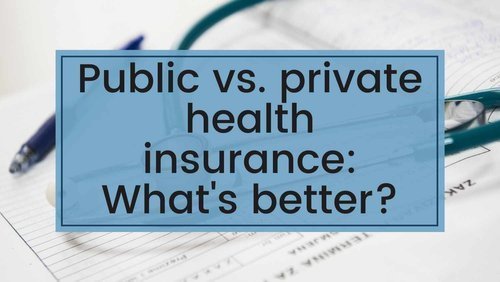
Health insurance is a critical part of financial planning and well-being, but choosing the right type can be confusing. The most common dilemma people face is whether to opt for private or public health insurance. While both offer essential medical coverage, they vary significantly in cost, benefits, and accessibility. So, which one actually saves you more in the long run? Let’s dive into the pros, cons, and cost comparisons to help you make an informed choice.
What Is Public Health Insurance?
Public health insurance is usually provided or subsidized by the government. In many countries, this includes national healthcare systems like Medicare, Medicaid, or universal healthcare programs. These systems are funded through taxes and aim to provide broad access to basic health services for all citizens.
Pros:
- Lower Premiums or Free Coverage: Public plans often come with little or no monthly premiums.
- Coverage for All: Even those with pre-existing conditions or low income can qualify.
- Government Regulation: Costs are generally controlled, and there’s transparency in pricing.
Cons:
- Longer Wait Times: Public systems often have high patient loads, leading to delays in non-emergency care.
- Limited Choice: Fewer options when choosing doctors, specialists, or treatments.
- Less Personalized Care: Treatment options and availability may be limited due to budget constraints.
What Is Private Health Insurance?
Private health insurance is offered by private companies and may be purchased individually or through employers. These plans typically offer a wide range of coverage options, including access to private hospitals, shorter wait times, and specialist care.
Pros:
- Faster Access to Care: Shorter wait times for consultations and procedures.
- Wider Range of Services: Includes access to alternative medicine, dental, and vision coverage.
- More Provider Options: Greater freedom in choosing doctors, specialists, and facilities.
Cons:
- Higher Premiums: Monthly costs can be significant, especially for families.
- Out-of-Pocket Costs: Deductibles, co-pays, and uncovered services can add up quickly.
- Eligibility Requirements: Some plans may exclude people with pre-existing conditions or charge them more.
Cost Comparison: Which One Saves You More?
When it comes to saving money, the answer isn’t always straightforward. Here’s how costs typically compare:
1. Premiums and Deductibles
- Public insurance often wins here. Premiums are lower or even nonexistent.
- Private insurance comes with higher monthly premiums, but it might offer faster access to treatment.
2. Out-of-Pocket Costs
- Public plans cap out-of-pocket expenses and often include subsidies.
- Private plans may have high deductibles and unexpected costs not covered by the plan.
3. Long-Term Financial Impact
- If you’re generally healthy and rarely visit doctors, a public plan will likely save you more.
- If you need frequent or specialized care and want shorter wait times, private insurance could offer better value despite higher costs.
Who Should Choose What?
- Young, healthy individuals or low-income families: Public insurance is usually the most cost-effective choice.
- Professionals with specific healthcare needs or higher income: Private insurance can offer more convenience and faster service.
- Elderly or people with chronic conditions: A mix of public (like Medicare) with private supplemental insurance often works best.
Final Thoughts
Choosing between private and public health insurance boils down to your health needs, financial situation, and preferences. If affordability is your top priority, public insurance is often the better deal. But if timely access to specialists and personalized care matters more, private insurance might be worth the extra cost.
In either case, do your research, compare policies, and consider your current and future health needs. It’s not just about saving money—it’s about securing peace of mind and ensuring quality care when you need it most.